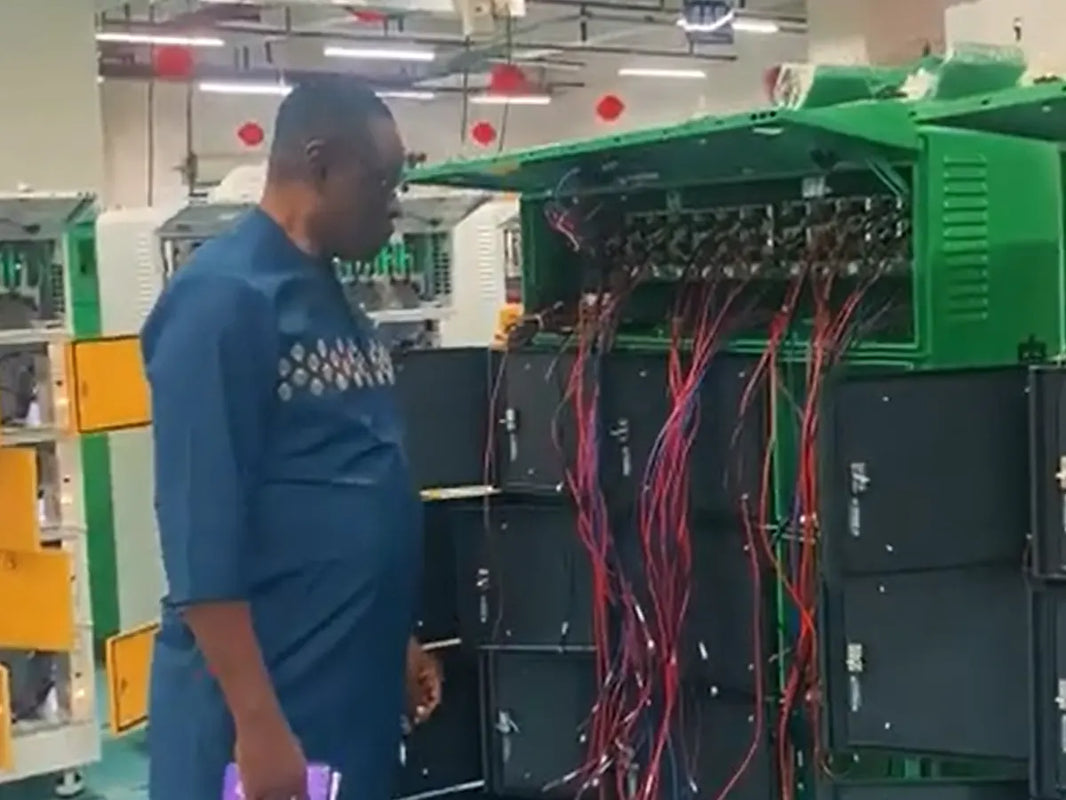Every driver knows the stress of turning the key on a cold morning and hearing a slow engine start. The cause is often a weak battery, leading many to ask, how many cold cranking amps do I need to avoid this problem? Modern vehicles rely on battery power not only to start the engine but also to run safety systems and electronics. Understanding cold cranking amps (CCA) helps you choose the right battery for reliable starts in any weather. This guide explains what CCA means, why it’s important, and how to pick the best battery for your vehicle’s needs.

Main content:
- Understanding What Cold Cranking Amps Really Mean
- What Factors Affect How Many Cold Cranking Amps Do I Need?
- How Does Cold Weather Impact the Battery?
- How Many Cold Cranking Amps Do I Need?
- Finding Your Vehicle’s Official Battery Specifications
- What Happens If You Choose the Wrong CCA Battery
- How Vehicle Type and Technology Influence Battery Needs
- Testing Your Battery’s Cold Cranking Amps
- Choosing the Right Battery for Your Needs
- Conclusion
- FAQs
Understanding What Cold Cranking Amps Really Mean
Cold Cranking Amps, or CCA, show how much power a car battery can give for 30 seconds at 0°F (–17.8°C). It explains what does CCA mean on a battery and tells you how well the battery can start your car when it’s very cold outside.
A higher CCA number means the battery can deliver more power in cold weather, which helps your engine start faster. This is important because cold temperatures make engine oil thicker and harder to move, so the battery has to work harder.
If your battery’s CCA is too low, your car might crank slowly or not start at all on a cold morning. Even in normal weather, the right CCA helps your car start smoothly and prevents damage to the starter motor.
Modern cars with start-stop systems and many electronic features also need strong batteries with enough CCA to run everything properly.
So, when you ask, “How many cold cranking amps do I need?”, you’re really asking how much power your car needs to start easily in your local weather.
What Factors Affect How Many Cold Cranking Amps Do I Need?
Several things can change how many cold cranking amps do I need for my car. Here are the main ones:

1. Type of Vehicle
Different vehicles need different levels of starting power. A small sedan requires less power than a pickup truck or SUV, while boats, golf carts, and ATVs also have unique power demands.
2. Engine Size and Cylinders
The bigger the engine, the more energy it takes to turn it over. Cars with more cylinders need higher CCA ratings to spin the crankshaft and start smoothly.
3. Battery Condition
As batteries age, they lose some of their strength. An older battery might struggle to deliver enough power, so you’ll need one with a higher CCA or replace it altogether. Keeping your battery clean and maintained helps it stay efficient longer.
4. Weather and Temperature
Cold climates can reduce a battery’s performance. When it’s freezing, your battery has to work harder to start the engine. That’s why vehicles in colder areas need higher cold cranking amps to ensure reliable starts every morning.
Understanding these factors helps you make a smarter choice when deciding how many cold cranking amps do I need for your vehicle.
How Does Cold Weather Impact the Battery?
Cold weather can seriously affect how your car battery works.
Car batteries create power through chemical reactions, but when it’s cold, these reactions slow down, and the battery produces less electricity. This makes it harder for your car to start.
In freezing temperatures, engine oil becomes thicker and diesel fuel can gel, which adds more resistance. Because of this, your battery needs higher cold cranking amps (CCA) to start the engine smoothly.
Here’s how temperature affects battery performance:
- At 80°F (26.7°C): The battery works best.
- At -22°F (-30°C): The battery’s power can drop by about 50%.
- At 122°F (50°C): The battery’s lifespan becomes shorter.
So, understanding battery’s CCA rating helps you choose the right battery and avoid starting problems in extreme weather.
How Many Cold Cranking Amps Do I Need?
If you’re asking, “how many cold cranking amps do I need?”, it mainly depends on your vehicle type and engine size.
As a rule, a battery should have 1 CCA per cubic inch of engine size, and diesel engines need about 2 CCAs per cubic inch since they require more power to start.
You don’t need to guess the number, just check your car’s manual or the manufacturer’s website to find the recommended CCA. Always choose a battery that meets or slightly exceeds that number.

Here’s a quick guide to help:
- E-scooter-electric motorcycle: 100-320 CCA
- Small cars: 350–400 CCA
- Medium cars: 400–600 CCA
- Large vehicles/trucks: 600–900 CCA
Picking the right CCA ensures your car starts easily, even in cold weather.
Finding Your Vehicle’s Official Battery Specifications
Every automaker provides a recommended CCA rating designed for your specific engine and electrical system. You can locate it in your owner’s manual, on the original battery label, or on the manufacturer’s website. If in doubt, your mechanic or dealership can confirm it in seconds.
Avoid making assumptions or choosing a battery purely based on price. Using a battery with lower CCA than specified can cause unreliable starts, while going slightly higher is perfectly safe — and often beneficial, especially in colder climates.
When researching how many cold cranking amps do I need, rely on official data, not guesswork. It’s a simple step that saves future frustration.
What Happens If You Choose the Wrong CCA Battery
A mismatched battery can lead to more trouble than you expect. A low-CCA battery might crank slowly or fail entirely in cold weather, straining both the battery and the starter motor. Over time, that strain can shorten component lifespan and cause repeated jump-start situations.
Opting for a higher-CCA battery, on the other hand, usually poses no risk to your car. In fact, it can enhance performance and longevity. The main drawbacks are potential size differences and higher costs. But with newer battery designs offering more power in compact packages, it’s easier than ever to find a perfect fit.
When asking yourself how many cold cranking amps do I need, remember: being slightly above the recommendation is fine; being below it is not.
Read: Car won't start in the cold
How Vehicle Type and Technology Influence Battery Needs
Not all vehicles demand the same cold cranking amps. Gasoline engines are generally easier to start, so they can manage with moderate CCA levels. Diesel engines, however, require much more power to ignite due to their higher compression ratios, often needing batteries with 800 CCA or more.
Older vehicles, especially those without advanced fuel injection systems, may also require higher cranking power. In contrast, modern vehicles with efficient starters and better energy management systems can operate reliably with lower CCA values.
Electric and hybrid vehicles are an exception. They don’t rely on a traditional starter motor or a high-CCA 12V battery for engine cranking. Instead, their auxiliary batteries primarily power electronics and control modules.
That’s why when asking how many cold cranking amps do I need, always tailor the answer to your specific vehicle type and technology.
Testing Your Battery’s Cold Cranking Amps
Here’s how to check your battery’s cold cranking amps (CCA):

1. Turn off your car engine before starting the test.
2. Connect a digital battery tester to the battery’s positive and negative battery terminals.
3. Read the display — it will show your battery’s current CCA and compare it with the rated value.
Check the results:
- If the number is close to the rated CCA, your battery is still in good shape.
- If it's much lower, your battery may soon need replacement.
4. Visit an auto parts store if you don't have a tester — most offer free CCA testing.
Testing your battery regularly helps you know how many cold cranking amps do I need for reliable starting, especially in cold weather.
Choosing the Right Battery for Your Needs
Here’s how to find out how many cold cranking amps do I need for your car:
- Check the owner's manual – It lists the right CCA based on your car’s engine and design.
- Look at the battery label – You can often see the recommended or minimum CCA there.
- Consider the weather – In cold areas, choose a battery with a higher CCA for easier starts.
- Match your engine size – Bigger engines need more power, so pick a battery with a bit higher CCA than the minimum.
Following these tips helps you choose the best battery for reliable performance.
Conclusion
If you're wondering how many cold cranking amps do I need for my car, it mainly depends on the engine size, vehicle type, and weather conditions. Bigger engines, like those in trucks or SUVs, need a battery with a higher CCA rating. In warm climates, CCA isn't a big concern, but in cold areas, it's very important for smooth engine starts.
To know the exact number your car needs, check the owner’s manual, visit the manufacturer’s website, or look at the label on your current battery.
FAQs
How many cold cranking amps do I really need?
If you're wondering how many CCAs you will need, a good rule of thumb is that an engine will need about one amp per cubic inch of engine displacement.
Is it better to have higher cold cranking amps?
For vehicles operated in lower temperatures, it is harder for your engine to turn over in cold weather. A higher CCA rating means the battery can provide more power to the starter motor, turning the engine over faster and more reliably in extreme conditions.
What CCA is too low?
A low CCA rating indicates that the battery doesn't hold enough power to turn on headlights or start the engine.
Related Articles: What cca means on a car battery, Car battery voltages, Car battery safety
















